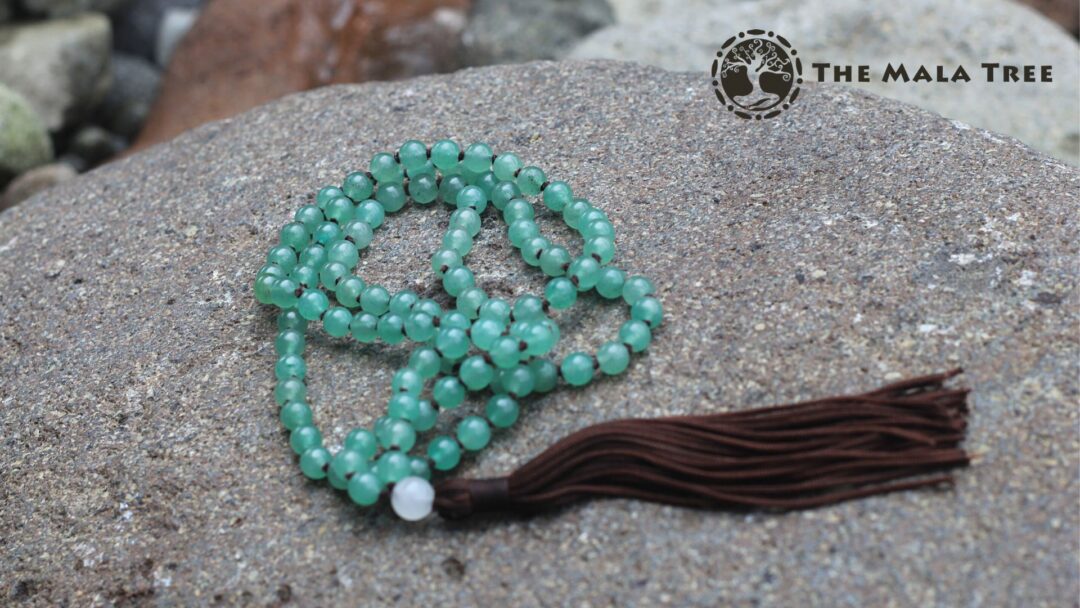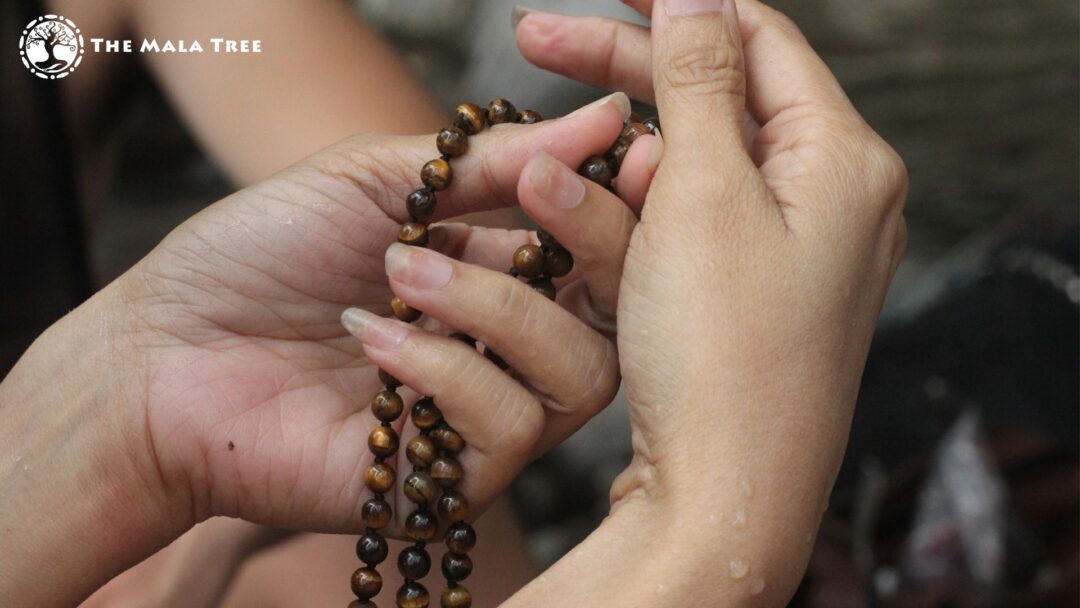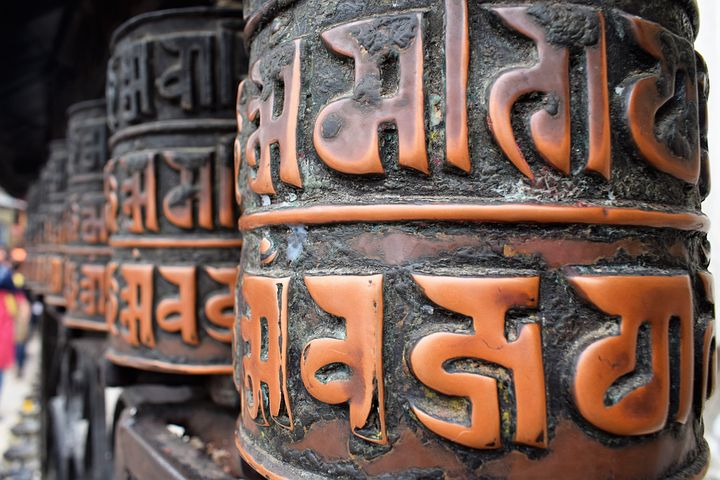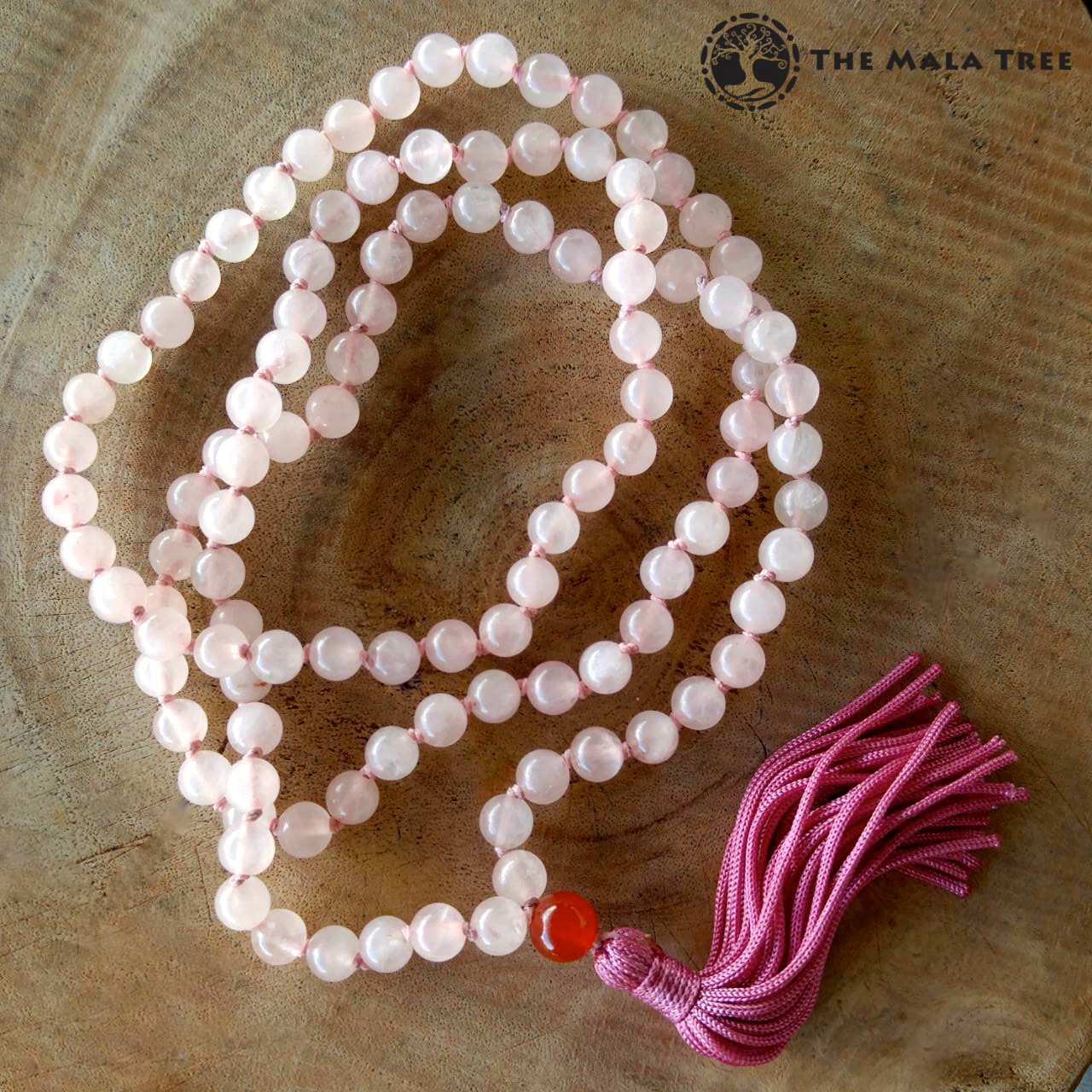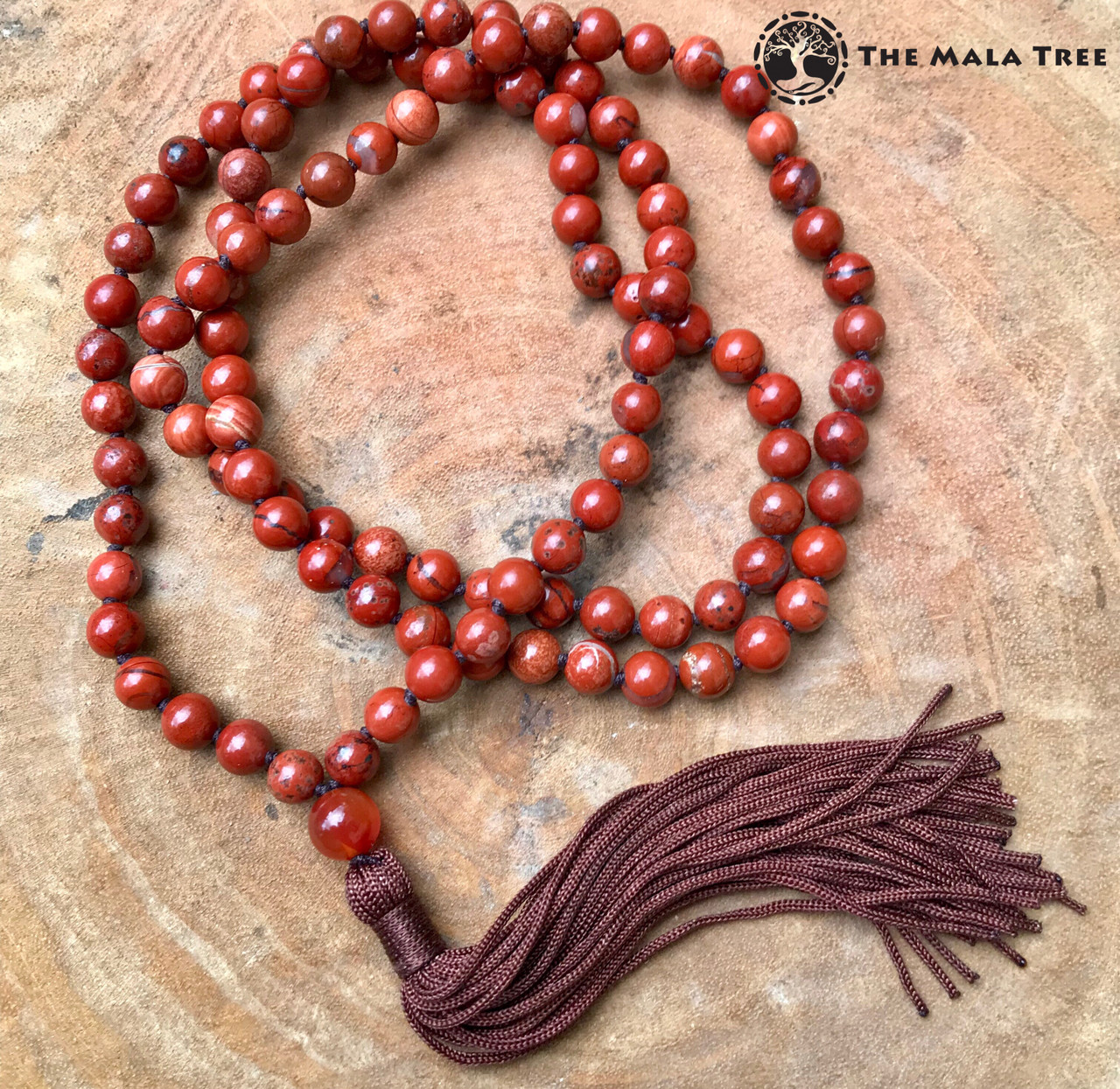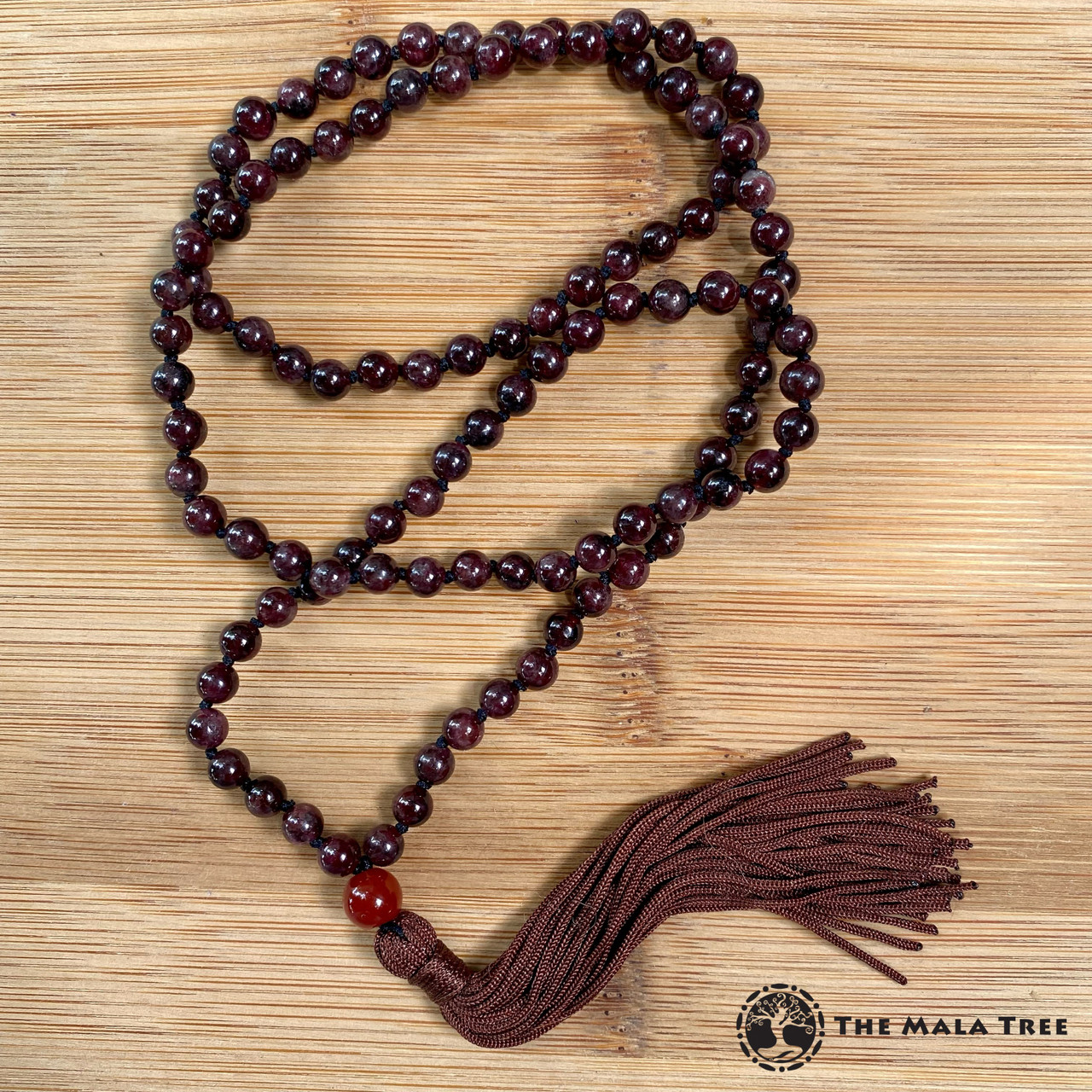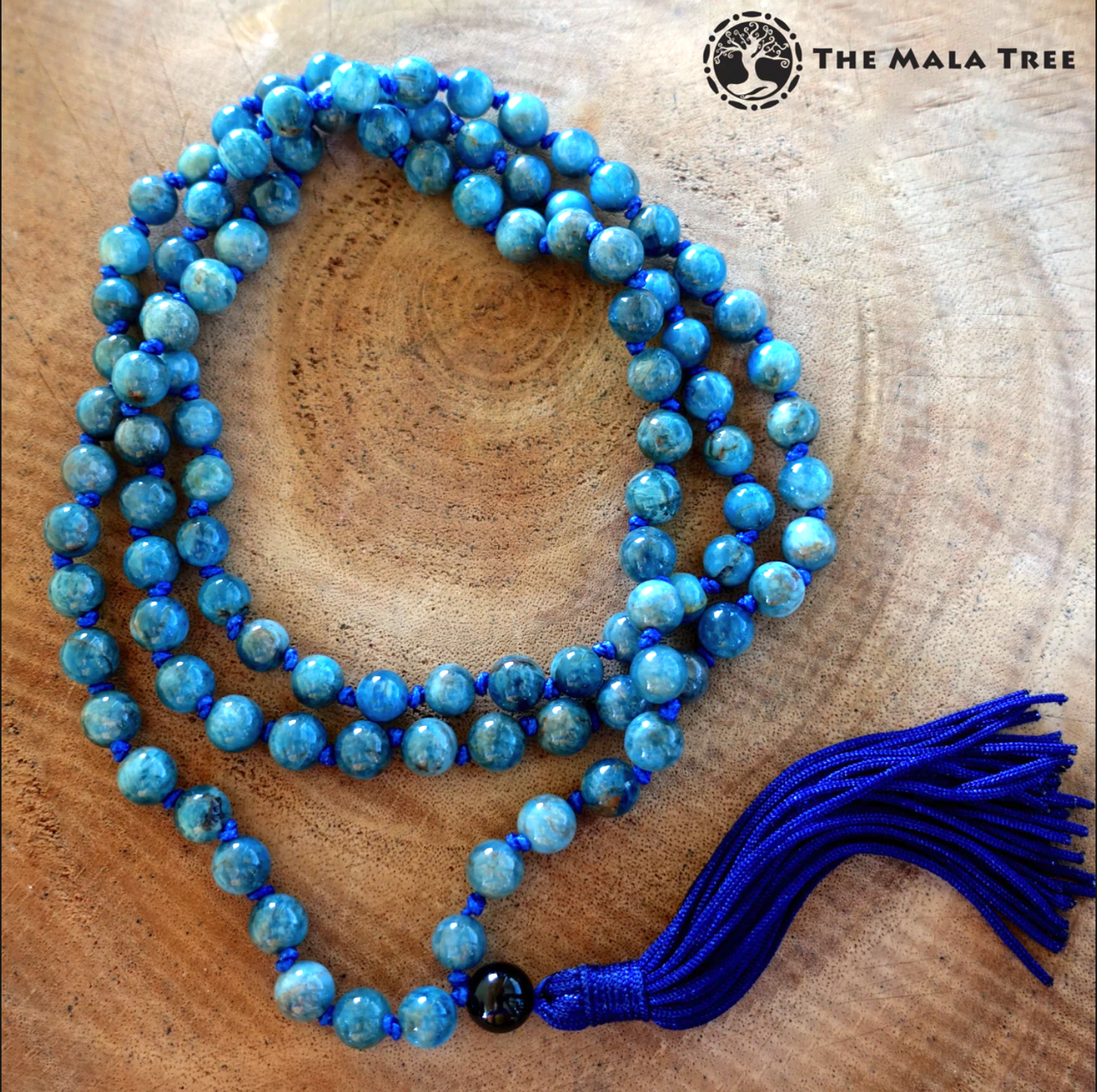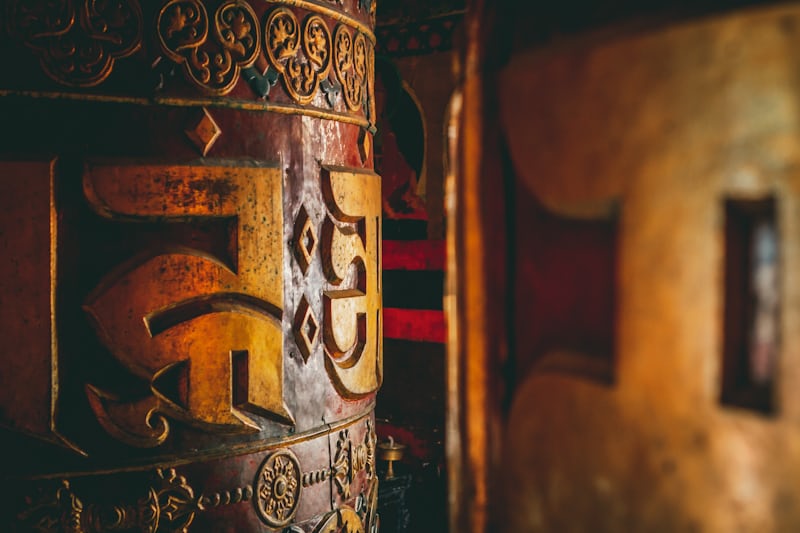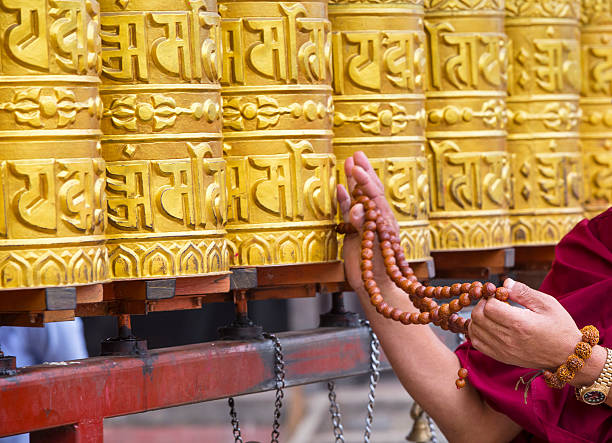
Hello there! The long-awaited 2024 Feng Shui Forecast is finally here! It’s time to unlock the year’s hidden potential and navigate its dynamic currents with grace. It’s become a cherished yearly habit, like savoring that first sip of a steaming cup of tea on a cold morning. This year, the spotlight shines on the mighty Wood Dragon, its powerful energy promising a whirlwind of change, transformative opportunities, and a healthy dose of challenges to keep things interesting.
To harness its potent energy, we’ve compiled Must-Have cures and enhancers for each animal sign, guiding you toward abundance, harmony, and success.
So, dive deep into the intricate dance of the Flying Stars and unleash the magic of Feng Shui in your own space. We are proud of this edition of the annual forecast.
Let the Dragon roar, and let 2024 be your year to shine!

2024 GENERAL OUTLOOK
The Year of the Wood Dragon marks a significant period of transformation and change, offering fresh opportunities and new beginnings for individuals across various animal signs. Traditionally associated with power and opportunities, the Dragon’s influence remains potent in 2024. Encouraging everyone to excel, this year introduces impactful events that extend beyond personal Feng Shui, influencing a broader scale.
Navigating 2024 requires a blend of courage and caution. The year promises a fast-paced and dynamic journey, marked by abrupt changes, emphasizing the importance of adaptability to achieve one’s goals. Stepping back to reassess situations becomes crucial, benefiting all involved.
Entering the Fire Period 9, characterized by the dynamic and unpredictable nature of fire, calls for heightened caution. Lack of preparedness may lead to the loss of investments and acquired assets from previous periods. As a precaution, individuals are urged to surround themselves with protective charms and strive to balance the elements in their charts, pacifying the potential impact of the roaring fire.
The prevailing energy is characterized by the presence of the Quarrelsome Star. Minor disagreements have the potential to escalate rapidly during this period, necessitating everyone to uphold composure and remain calm. It is recommended to disengage from conversations as soon as tensions begin to rise. Collaborative efforts are discouraged. In the workplace, maintain a prudent distance from colleagues and strive for independence, concentrating on core tasks. In severe instances, legal disputes and even international conflicts could emerge, emphasizing the importance of diplomatic and cordial behavior at all times.
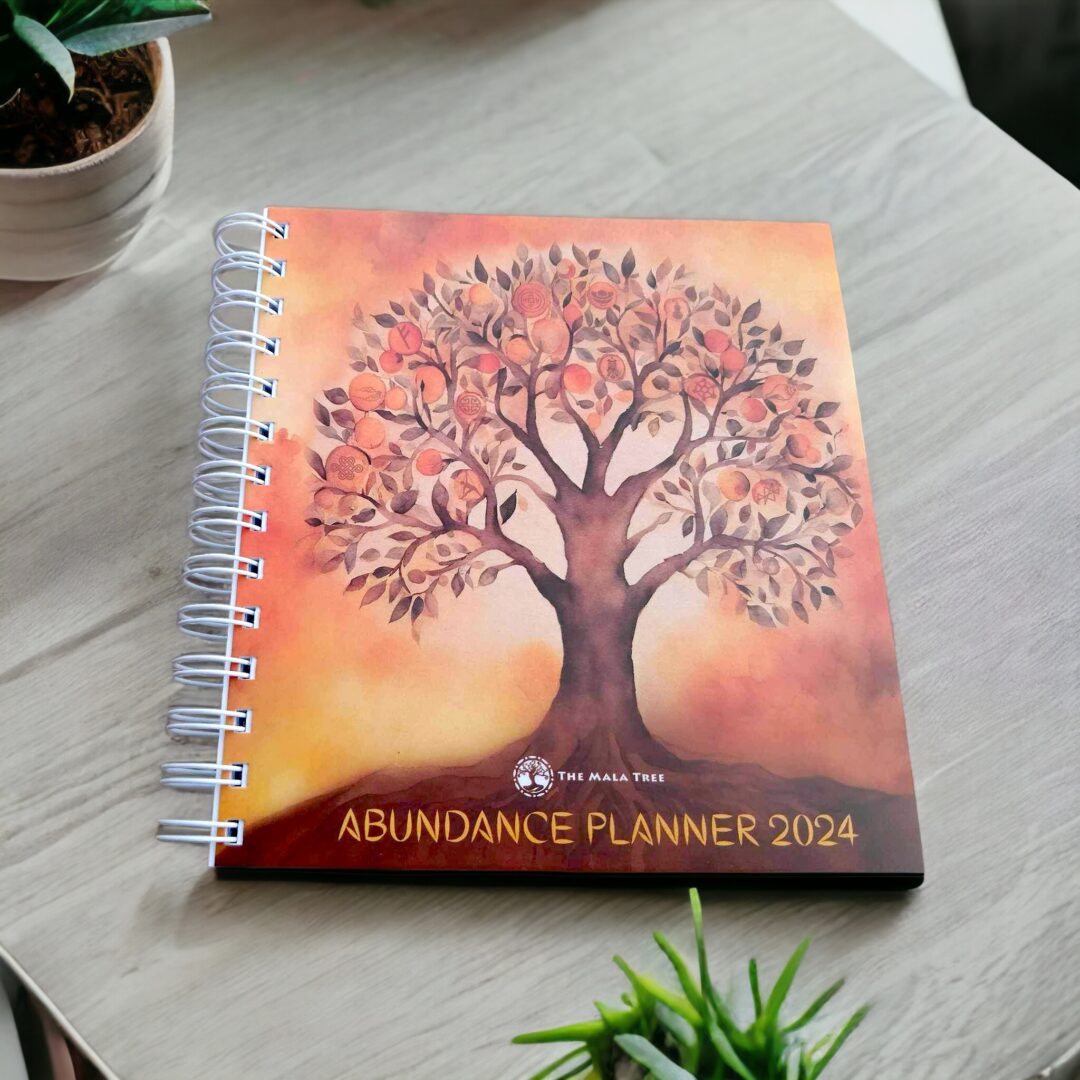
Always play safe and make sure that you plan important activities using your copy of The Mala Tree’s ABUNDANCE PLANNER 2024, which also serves as a reference guide for the day’s auspicious and inauspicious details.
May 2024 be a year where every wish finds its echo and every dream finds its wings! Let abundance reign in 2024 for all. Happy New Year of the Wood Dragon, 2024!
To learn more about the 2024 Forecast and more sustainable and environmentally conscious Must-Have Cures and Enhancers for the 12 animal signs, please read the articles below.

RAT (1936, 1948, 1960, 1972, 1984, 1996, 2008,2020)
Get ready for a year of wealth and leadership opportunities with the Rat! You’ll have the chance to make good money, gain loyal followers, and reach your lofty goals. However, watch out for illness and problems brought by the 3 Killings.
As we embark on a new year, the elemental landscape changes, potentially causing an imbalance in your sign’s core energy. This imbalance can affect your wealth, career, health, relationships, and protection. To restore harmony and attract abundance in all these aspects, wearing the FIRE “Om Mani Padme Hum” Corrective Element Bracelet and the WOOD “Om Mani Padme Hum” Corrective Element Bracelet in 2024 is highly recommended. You may re-use this bracelet (forever) again in subsequent years that demand a boost in the elements.
Get ready for a fantastic year ahead with the Rat! To make the most out of the year and harness the good energies the Year of the Dragon brings, always consult your copy of The Mala Tree’s ABUNDANCE PLANNER 2024. Plan significant events like starting a business, introducing a product, traveling, medical procedures, etc., and strategize your path to prosperity by seeking guidance from and utilizing this planner. Cultivate a positive relationship with your Feng Shui days, and you’ll appreciate the results.
Since your element luck is weak, capturing good fortune may be a challenge. Keep yourself protected by wearing the Apatite Classic 108 Japa Mala Necklace and meditate with it. An effective mantra for you this year is the White Dzambhala Mantra, Om Padma Krodha Arya Jambhala Hridaya Hum Phat. Displaying the Lapis Lazuli Crystal Point/Generator/Wand in the South will bring protection. For wealth and abundance, wear a Pyrite Bracelet.
Boost your inner “lung ta” (life force) with a Malachite Tumbled Stones or Malachite Cube. Additionally, a Jade Bracelet will help safeguard everything you already have and bring in new triumphs and successes as we enter Period 9! To protect your health, it is advised that you wear the Health Protection Bracelet. To secure your finances, always carry the Money Loss Protection Bracelet.
For wealth luck, place the Aventurine Money Tree in the North. If you’re in a leadership position, the Red Jasper Bracelet in your office will bring you benefits. Protect your home from negative energies and troubles this year by placing an Ojo de Dios near the main entrance and inside your car.
Students looking for excellent grades and professionals striving for success in their careers can energize their space and auras with a Gold Tiger’s Eye Double Terminated Pendant. Simply wear it daily and remember to touch it whenever you feel pressure or whenever you need its assistance. A Selenite Flower of Life Square Plate will help remove negative energies.
This year, there’s an elemental imbalance, specifically with the Water element. But fear not, we have a solution! Kickstart the year on January 1, 2024, by lighting the powerful Feng Shui Water Incense Sticks to enhance the water energy.
Below is a bulleted forecast for specific aspects (Wealth, Career, Relationships, and Health) of your Feng Shui sign in 2024:
Wealth: 5/5
- Positive income growth: Income is expected to rise, but unexpected expenses are possible.
- Caution is key: Avoid risky investments and stick to ethical practices to avoid financial troubles.
- Increase earning potential: Expand professional skills and knowledge to boost wealth accumulation.
- Place a Garnet Crystal Point/Generator/Wand near your entrances to bring wealth luck.
Career: 4/5
- Dynamic opportunities: The Year of the Dragon offers exciting career opportunities for Rats.
- Showcase your talents: Display your skills, embrace the energy, and work to your full potential.
- Shining in specific fields: Media, Arts, and Communication professionals will particularly thrive.
- Collaboration is key: Build strong relationships with colleagues and leverage your abilities to secure big opportunities for the company.
- To help strengthen cooperation in the workplace, place a Carnelian Palm Stone on your desk.
Health: 4/5
- Focus on well-being: Health requires particular attention in 2024.
- Potential for injuries and infections: Take precautions to avoid injuries and infections.
- Strengthen immunity: Boost your immune system through natural foods and regular exercise.
- Mind-body balance: Incorporate practices like Yoga and CrossFit for balanced mental and physical health.
- Manage stress: Avoid undue stress to maintain overall well-being.
- The powerful Sapphire Bracelet will assist you with all your health issues while at the same time providing you and those around you protection.
Relationships: 4/5
- Love is in the air: Married and committed couples will experience deeper bonds.
- Singles need caution: Single Rats might encounter challenges in finding love.
- Strengthen social connections: Actively participate in social activities.
- Trust your intuition: rely on your gut feeling when building new relationships.
- Communication is vital: Open and honest communication is essential for lasting connections.
- For romantic bliss, a Sakura Agate Bracelet will do wonders.

OX (1937, 1949, 1961, 1973, 1985, 1997, 2009)
Get ready for a year of big opportunities and blessings, Ox! With the Big Auspicious Star on your side, you have a strong life force and heavenly luck. Don’t be afraid to step out of your comfort zone and try new things. Your wealth luck is also improving, and you have a strong mentor by your side.
With each new year, the dance of the five elements (earth, metal, water, wood, and fire) shifts, potentially impacting your sign’s foundational energy. This can affect your wealth, career, health, relationships, and protection. The METAL “Om Mani Padme Hum” Corrective Element Bracelet and the WOOD “Om Mani Padme Hum” Corrective Element Bracelet in 2024 can be a powerful tool to restore balance and attract prosperity in these areas. You may re-use this bracelet (forever) in future years when there is a need for an elemental boost.
Embrace the year ahead, Ox, and make the most of all the amazing opportunities coming your way! To make the most out of the year and harness the good energies the Year of the Dragon brings, always consult your copy of The Mala Tree’s ABUNDANCE PLANNER 2024. Organize important events, such as business openings, product launches, travel, medical procedures, and more, aligning your path to wealth by consulting and implementing this planner. Cultivate friendships with your Feng Shui days, and gratitude will follow.
To overcome any obstacles, you can use the Malachite 108 Mala Necklace with Gold Plated Silver Piyao Center Bead Mala to boost reducing energy and display the Mixed Gemstones Money Tree in the South. This will help bring balance and positive energy into your life. Chant the Vasudhara Money Mantra to invite more wealth into your life: Om Vasudhara Svaha. This mantra invokes Vasudhara, the Earth Goddess. Chanting it is believed to bring abundance and prosperity in the form of wealth, food, and resources.
Make sure to also appease the Tai Sui by wearing a Black Obsidian Piyao Money Ball Bracelet and displaying a Black Tourmaline Orb/Sphere in the Northeast. This will ensure harmony and protection in your home. As protection against the negative stars of 2024, you are encouraged to wear the Violence and Burglary Protection Bracelet and boost it with the People with Bad Intentions Protection Bracelet. You may re-use this bracelet (forever) in the coming years that necessitate a reinforcement of the elements. Protect your home from negativity and misfortune by displaying an Ojo de Dios near your main door and in your car.
For students and those pursuing a career, the Howlite Double Terminated Pendant is a powerful energizer. Display a Clear Quartz Crystal Point/Generator/Wand on your study desk or work desk and watch your grades and success soar. Inside your purse or desk drawers, make sure you have a Carnelian Bracelet to help you overcome stress and for protection against envious coworkers.
This year, there’s an elemental imbalance, specifically with the Water element. Experience the perfect balance in 2024 by harmonizing the elemental forces. Start the year right on January 1st by igniting the enchanting Feng Shui Water Incense Sticks to enhance the water energy. to enhance the presence of water element and restore equilibrium.
Below is a bulleted forecast for specific aspects (Wealth, Career, Relationships, and Health) of your Feng Shui sign in 2024:
Wealth: 2/5
- Financial vigilance: Prioritize safety and prudence in investments.
- Cautious lending: Avoid lending money without caution to prevent losses.
- Wise budgeting: Budget effectively and avoid high-risk investments.
- To block off negative people and thoughts, A Peridot Bracelet should be worn It is also a great wealth stone.
Career: 3/5
- Potential hurdles: Expect challenges at work, possibly health-related.
- Supportive figure: A capable female colleague will offer guidance and support.
- Overcoming challenges: Navigate difficulties with patience and perseverance.
- To assist you in the workplace and to ward off people with ill intentions who can potentially sabotage your advancement, wear a Botswana Agate Bracelet.
Health: 2/5
- Prioritize self-care: Manage emotional stress and minor ailments with regular self-care practices.
- Meditation and mindfulness: These practices can effectively reduce emotional stress.
- Overwork awareness: Pay attention to fatigue and avoid overworking.
- For emotional support, place a Citrine Orb/Sphere inside your living or dining room.
Relationship: 3/5
- Challenges in communication: Open communication will be crucial to maintain harmony.
- Introspective tendencies: Potential for misunderstandings due to introversion.
- New relationships are possible: Strong foundations can lead to lasting connections.
- A pair of Blessed Mandarin Ducks inside your bedroom will help bring out love and romance.

TIGER (1938, 1950, 1962, 1974, 1986, 1998, 2010, 2022)
Unleash the Tiger within and pursue your wildest dreams! This year, your luck is unstoppable with lucky stars guiding you towards new opportunities. Push past any obstacles from the past and get ready for your big breakthrough!
Every new year brings a new energetic landscape, potentially destabilizing your sign’s element. As the year changes, so too do the elemental forces that influence your sign’s core energy. This can lead to instability in areas like wealth, career, health, relationships, and protection. Wearing the WATER “Om Mani Padme Hum” Corrective Element Bracelet and the METAL “Om Mani Padme Hum” Corrective Element Bracelet in 2024 provides a potent way to align with the five elements and cultivate harmony and abundance. You may re-use this bracelet (forever) in future years that call for an enhancement of the elements.
Get ready for a year filled with magic and possibilities, Tiger! To make the most out of the year and to harness the good energies the Year of the Dragon brings, always consult your copy of The Mala Tree’s ABUNDANCE PLANNER 2024. Strategically plan major activities like business launches, product introductions, travel, medical procedures, and others to enhance your journey toward prosperity. Utilize this planner for guidance, befriend your Feng Shui days, and experience gratitude.
There’s only one thing to watch out for the Yin House Star. Ward off its negative effects with the Beryl and Aquamarine Lucky Arowana Bespangled 108 Mala. Chant your recommended mantra this year, the Ganesh Mantra of Success: Om Gam Ganapataye Namaha.
Tap into the support of the heavens with the Angelite Bracelet. As we enter a new period, wear a Kyanite Bracelet and the Betrayal & Backstabbing Protection Bracelet and display the Citrine Money Tree in the East to protect what you have and invite in incredible triumphs and successes!
For a stroke of wealth and good fortune, place an Apatite Plate/Slab inside your living rooms and a Black Obsidian Plate/Slab near your main entrances. Combat negativity with an Ojo de Dios. Place it by your main door, in your car, and outside your house.
Students, boost your grades with a Sodalite Double Terminated Pendant and place several pieces of Botswana Agate Tumbled Stones inside your bags and on your study desks. And if you’re aiming for success in your career, display an Aventurine Orb/Sphere on your study or work desk for a boost in achieving greatness.
Enhance the energy of 2024 by addressing its imbalance of elements. Start the year strong by lighting Feng Shui Water Incense Sticks to enhance the water element. on January 1st. 2024 lacks the Water element.
Below is a bulleted forecast for specific aspects (Wealth, Career, Relationships, and Health) of your Feng Shui sign in 2024:
Wealth: 2/5
- Potential financial setbacks: Unexpected bills and home repairs might occur.
- Secure income: Stabilize monthly income to manage expenses.
- Avoid extravagance: Prioritize financial needs and avoid unnecessary spending.
- Explore secondary income: Consider additional sources of income to improve financial stability.
- Cautious investments: Avoid high-risk financial ventures.
- A Labradorite Palm Stone placed in your living room or main entrance will bring an abundance of luck and opportunities.
Career: 2/5
- Workplace changes: Expect significant shifts within teams or organizations.
- Job insecurity possible: Be prepared for potential career challenges.
- Dedication and teamwork: Demonstrate commitment and maintain positive relationships at work.
- Creative opportunities: Creative individuals might find opportunities to shine.
- To gain support from helpful people in the workplace, including your bosses, place several Larimar Tumbled Stones inside your work bag and drawers.
Health: 2/5
- Mental health focus: Incorporate daily practices like Yoga and meditation for well-being.
- Healthy habits: Avoid harmful habits like smoking and prioritize a healthy lifestyle.
- Seek medical attention: Be proactive in addressing any health concerns.
- For financial support and well-being, place a Yooperlite Crystal Point/Generator/Wand inside your dining room.
Relationship: 2/5
- Emotional volatility: Be aware of potential mood swings and their impact on relationships.
- Singles: focus on self-esteem: Prioritize self-love and confidence to attract healthy connections.
- Committed couples: clear communication: Open and honest communication is crucial to avoid misunderstandings.
- Married couples: quality time: Invest in shared experiences and vacations to strengthen bonds.
- Hang a Mini Ojo de Dios of Love on your bedroom window, near your bed for love luck.

RABBIT (1939, 1951, 1963, 1975, 1987, 1999, 2011)
Unlock a year of abundant luck for the Rabbit! The Victory Star shines upon you, providing an unbeatable advantage against competitors and paving the way for success. Don’t forget to wear the Rainbow Fluorite Classic 108 Japa Mala Necklace and chant the Lakshmi Prosperity Flow Mantra to cultivate wealth, abundance, and obstacle-free living: Om Gum Shrim Maha Lakshmiyei Swaha.
Each year brings a fresh set of elemental influences, potentially disrupting the five pillars of your life: wealth, career, health, relationships, and protection. To achieve harmony and attract abundance in these areas, aligning with the five elements (earth, metal, water, wood, and fire) is key. The WATER “Om Mani Padme Hum” Corrective Element Bracelet and the EARTH “Om Mani Padme Hum” Corrective Element Bracelet in 2024 offer a powerful solution to facilitate this alignment. This bracelet is suitable for re-use (forever) in years ahead that require a boost in the elements.
To make the most out of the year and to harness the good energies the Year of the Dragon brings, always consult your copy of The Mala Tree’s ABUNDANCE PLANNER 2024
Schedule crucial events such as business beginnings, product launches, travel, medical procedures, and more, shaping your path to financial success through consultation and application of this planner. Form a positive relationship with your Feng Shui days, and appreciation will abound.
Don’t let any energy challenges hold you back! Harness the powers of the Red Tiger’s Eye Bracelet and the Ruby Bracelet to overcome any obstacles. With two Big Auspicious stars by your side, this year promises immense progress in all areas of your life, enhance this luck by placing a Red Jasper Plate/Slab in your living room. Carry an Amethyst Tumbled Stone to amplify your good fortune.
Boost your wealth by placing a Citrine Gem Tree on Rose Quartz in the North. Wear the Flower of Life Silver Pendant, and let this charming symbol enhance your financial abundance! The Money Loss Protection Bracelet and the People with Bad Intentions Protection Bracelet will help you negate negative situations.
Calling all students and career enthusiasts! Place a Citrine Orb/Sphere in the East. It is the ultimate energizer for academic excellence, abundance, and professional success. Display it on your study or work desk and watch your achievements soar! To ward off negative energy this year, position an Ojo de Dios by your house entrance, main door, and car interior.
Enhance the energy of 2024 by addressing its imbalance of elements (the annual chart lacks water). Start the year strong by lighting Feng Shui Water Incense Sticks to enhance the water energy. on January 1st.
Below is a bulleted forecast for specific aspects (Wealth, Career, Relationships, and Health) of your Feng Shui sign in 2024:
Wealth: 2/5
- Financial challenges: Potential for unexpected expenses and a tendency towards splurging.
- Prioritize prudence: Emphasize financial responsibility, especially with investments.
- Cautious approach: Exercise caution before entering new financial ventures.
- A Pyrite Crystal Point/Generator/Wand placed on your work desk or cash registers will invite wealth luck.
Career: 3/5
- Growth and advancement: Opportunities for career progress are present.
- Obstacles to overcome: Be prepared for potential challenges and seek guidance when needed.
- Invest in continuous learning: Focus on professional development to enhance career prospects.
- A Citrine Bracelet on your wrist is always a good thing, especially if you want career advancement while gaining the support of your colleagues.
Health: 2/5
- Focus on well-being: Prioritize a balanced lifestyle to maintain good health.
- Physical exercise: Regular exercise benefits immunity and physical health.
- Meditation and diet: These practices promote emotional well-being and a healthy lifestyle.
- Stress management: Develop effective stress management strategies to ensure well-being.
- Sufficient rest: Prioritize adequate sleep for optimal health.
- An Amethyst Gem Tree on Rose Quartz inside the bedroom will help with relaxation, something you will need to help manage stress.
Relationships: 2/5
- Potential for conflict: Misunderstandings due to suspicion and mistrust might arise.
- Clear communication: Open and honest communication is key to maintaining harmony.
- Understanding and patience: These qualities are crucial for navigating relationship challenges.
- Singles: take things slow: Approach new relationships with caution and gradual development.
- Place a Sakura Agate Crystal Point/Generator/Wand inside your bedroom for relationship luck.

DRAGON (1940, 1952, 1964, 1976, 1988, 2000, 2012)
Step into the year of the Dragon, where fortunes align and possibilities abound. The mighty Dragon basks in the support of the Tai Sui, paving the way for success. Discover new horizons and improved wealth, thanks to the auspicious stars shining upon you.
However, challenges lurk in the form of the Illness Star and Yin House. Stay steadfast and don’t let these setbacks deter you from your path.
The arrival of a new year marks a shift in the elemental forces impacting your sign’s core energy. This can potentially lead to imbalances in wealth, career, health, relationships, and protection. The METAL “Om Mani Padme Hum” Corrective Element Bracelet and EARTH “Om Mani Padme Hum” Corrective Element Bracelet in 2024 presents a valuable resource to restore balance and promote abundance in all these aspects. You can revisit this bracelet (forever) in the years to come, especially when there is a need for an element boost.
Embrace the mystique of the Dragon and let 2024 be a year of triumph and fulfillment. The path is yours to conquer. To make the most out of the year and harness the good energies the Year of the Dragon brings, always consult your copy of The Mala Tree’s ABUNDANCE PLANNER 2024. Arrange essential activities like business launches, product debuts, travel plans, medical procedures, etc., and chart your course towards wealth by seeking advice from and implementing this planner. Forge connections with your Feng Shui days, and you’ll find reasons to be thankful.
Unleash the power of the Bloodstone Jade Wulou Guru 108 Mala to boost your health and well-being and wear the Howlite Bracelet to help you deal with people with aggressive behavior. These mystical symbols will bring harmony and strength to your surroundings, ensuring a smooth journey through 2024. When using the mantra for meditation, your recommended mantra of the year to unleash your wealth and wisdom and come up with the best life decisions–the Manjushri Mantra: “Om a ra pa ca na dhih.”
To keep the negative energies at bay, make sure you wear the combination of the Money Loss Protection Bracelet and the Third-Party Protection Bracelet at all times. These crystal combinations will protect you from any potential anger and bring you good fortune throughout the year. In addition, always ensure good chi flows around your house, and burn Incense Sticks every morning to drive away negative energy. Install an Ojo de Dios to counter negative energies. Place it near your home’s main entrance and in your car.
Boost your financial luck by placing a Citrine Crystal Point/Generator/Slab in the South. Allow prosperity to flow into your life and embrace the abundance that awaits. Seal this luck with the Mystic Knot Silver Pendant.
For students seeking academic excellence and ambitious professionals aiming for great success, the Fluorite Bracelet is a powerful tool. Display a Red Jasper Plate/Slab on your study or work desk and watch as it empowers you to achieve greatness in your chosen field.
In 2024, the element of Water is imbalanced. Start the year off right on January 1 by enhancing the Water element with the powerful Feng Shui Water Incense Sticks to enhance the water element..
Below is a bulleted forecast for specific aspects (Wealth, Career, Relationships, and Health) of your Feng Shui sign in 2024:
Wealth: 2/5
- Unpredictable financial outlook: Large investments may not perform as expected.
- Beware of losses: Exercise caution with finances and avoid high-risk ventures.
- Financial prudence: Prioritize budgeting and curb impulsive spending.
- Guard against scams: Remain vigilant to protect your financial assets.
- A Gold Rutilated Quartz Bracelet is a good wealth luck booster, make sure you have it in your arsenal.
Career: 2/5
- Potential career challenges: Anticipate obstacles in your professional journey.
- Launch new ventures with caution: Carefully assess risks before starting a business.
- Consider career changes carefully: Seek guidance before making decisions about job switches.
- Stability in current position: Maintaining your current position might be advantageous.
- Seek guidance from mentors: Leverage the experience and wisdom of trusted mentors.
- To boost charm and win favors from people of authority, always carry some Sakura Agate Tumbled Stones in your purse and place some inside your vehicles.
Relationship: 2/5
- Emotional ups and downs: Prepare for both positive and negative experiences in relationships.
- Clear communication is key: Married couples should actively communicate to avoid misunderstandings.
- Singles may face short-lived connections: Approach new relationships with caution.
- Seek relationship advice: Consider professional guidance for navigating emotional challenges.
- Make well-considered decisions: Don’t rush into significant emotional commitments.
- For a good emotional support stone, make sure you have an Amethyst Orb/Sphere inside your bedroom. This is also a popular loyalty stone.
Health: 2/5
- Prioritize accident prevention: Be particularly vigilant to avoid injuries involving sharp objects.
- Maintain a healthy lifestyle: Focus on a balanced diet, regular exercise, and adequate sleep.
- Positive mindset: Embrace a positive attitude to overcome challenges.
- Travel for relaxation: Consider travel as a means to de-stress and unwind.
- A Red Jasper Double Terminated Pendant may be worn (or placed inside your bags) during travel for extra protection.

SNAKE (1941, 1953, 1965, 1977, 1989, 2001, 2013)
Discover the secrets to thrive this year, Snake! Focus on preserving your precious relationships, wealth, and health. With a combination of afflictive stars and neutral element luck, it’s crucial to take powerful measures. take time to meditate with your Tibetan-Style Spessartine Garnet Mala with Piyao Guru and Gold-filled Markers.
each night to boost wealth and relationship luck. The sacred mantra of Amitabha (Amitayus) Buddha is Om Ami Dewa Hrih. This powerful mantra safeguards you from any obstacles and dangers, while also empowering you to overcome all hindrances on your path to success.
The changing year brings a new set of elemental influences, potentially impacting your sign’s fundamental energy and affecting your wealth, career, health, relationships, and protection. The FIRE “Om Mani Padme Hum” Corrective Element Bracelet, WATER “Om Mani Padme Hum” Corrective Element Bracelet, and WOOD “Om Mani Padme Hum” Corrective Element Bracelet in 2024 in 2024 offers a valuable solution, supporting you in achieving balance and abundance by aligning with the five elements. Re-use (forever) this bracelet again in future years that necessitate a strengthening of the elements.
Unveil the path to prosperity and fulfillment, Snake. Your future awaits! To make the most out of the year and harness the good energies the Year of the Dragon brings, always consult your copy of The Mala Tree’s ABUNDANCE PLANNER 2024. Strategize major events like business openings, product launches, travel arrangements, medical procedures, etc., using this planner as your guide to financial success. Embrace your Feng Shui days as allies, and gratitude will be a natural outcome.
Boost your health luck by welcoming the Carnelian Money Tree into your Southeast corner. Defend yourself against the Robbery Star and the 3 Killings with the Violence and Burglary Protection Bracelet and the People with Bad Intentions Protection Bracelet. A Black Tourmaline Orb/Sphere placed near your home’s entrances will help drive away negative energies.
To safeguard what’s rightfully yours and make wise decisions, call upon the mighty Ganesha and wear his obstacle-breaking Sitting Ganesha with Om Background Silver Pendant. Remember, diplomacy is key to your success this year. Place a Black Obsidian Plate/Slab in the heart of your home to nurture harmonious relationships and dispel negativity. Banish negativity with an Ojo de Dios. Place it at your doorstep, by the main entrance, and in your car to ward off bad energies for the year.
If you’re a student aiming for outstanding grades or a professional seeking career triumph, wear the Hematite Bracelet. Additionally, a Citrine Bracelet is your ultimate abundance energizer.
Enhance the harmony of 2024 by addressing its elemental imbalance, specifically the deficiency of Water. Ignite the Feng Shui Water Incense Sticks to enhance the water energy. on January 1st to heighten the presence of this vital element.
Below is a bulleted forecast for specific aspects (Wealth, Career, Relationships, and Health) of your Feng Shui sign in 2024:
Wealth: 3/5
- Steady financial growth: Expect income primarily from your main source of income, such as your job.
- Strong base income: Look forward to substantial salary, commissions, and bonuses.
- Avoid risky ventures: Steer clear of side hustles and risky investments for now.
- Garnet is a love stone, but it is also a stone that helps bring fortune. As a wealth luck booster, make sure you have a Garnet Crystal Point/Generator/Wand.
Career: 4/5
- Promising outlook: Expect positive career shifts and exciting opportunities.
- Embrace change and learning: Be open to new projects and continuous learning for career advancement.
- Travel and overtime could lead to promotions: Be open to business trips and overtime as they may bring opportunities for promotion, seal this luck with an Orange Aventurine Bracelet.
- Transformations will lead to long-term growth: Embrace changes, even if they seem unsettling initially, as they will contribute to your long-term career success.
Health: 3/5
- Anticipate some health challenges, but the overall results will be positive.
- Essential to adopt a personalized exercise routine and maintain a balanced diet that suits individual health requirements.
- Participation in activities such as sports is crucial to promote both physical and mental well-being throughout the year.
Relationship: 4/5
- Love is in the air: Expect unexpected and positive developments in your love life. Release unnecessary blockages and allow yourself to meet new people with a Snowflake Obsidian Double Terminated Pendant.
- Singles: confessions are possible: Prepare to be surprised by confessions from someone you admire, leading to potential new relationships.
- Stronger bonds for committed couples: Committed couples will experience increased closeness and deepen their bonds.
- Open communication is key: Maintain open and honest communication to ensure lasting relationships.

HORSE (1942, 1954,1966, 1978, 1990, 2002, 2014)
Experience a surge in success potential, but tread carefully as the year presents challenges. Protect yourself from the Loss Star, Natural Disaster Star, and Three Killings in your sector. Shield yourself and your loved ones from potential harm by wearing the Sudden Death Protection Bracelet and pair it with the Karmic Debt Protection Bracelet.
With each year, the interplay of elements changes, potentially affecting your sign’s core energy and impacting your wealth, career, health, relationships, and protection. In 2024, the EARTH “Om Mani Padme Hum” Corrective Element Bracelet and the WOOD “Om Mani Padme Hum” Corrective Element Bracelet in 2024 offer a powerful resource, supporting you in achieving balance and abundance by aligning with the five elements. Feel free to re-use (forever) this bracelet in subsequent years when there is a requirement for an elemental boost.
Prepare yourself for a year of mystery, wonder, and long-lasting fortune. Act now to invite positivity into your life. To make the most out of the year and harness the good energies the Year of the Dragon brings, always consult your copy of The Mala Tree’s ABUNDANCE PLANNER 2024. Plan crucial activities such as business launches, product introductions, travel plans, medical procedures, and more, while sculpting your path to prosperity through consultation and utilization of this planner. Develop positive connections with your Feng Shui days, and gratitude will ensue.
Take the time to consider investment decisions wisely. Bring opportunities and protection at the same time by meditating using the Kyanite with Gold Guru 108 Mala every evening. Embrace the Green Tara’s grace by empowering your life with the soothing strength of the Green Tara Mantra for protection, healing, and success Om Tare Tuttare Soha.
Embrace powerful protection with the Red Jasper Crystal Point/Generator/Wand alongside a Lapis Lazuli Bracelet. Carry the Om and Lotus Silver Pendant for heavenly protection.
Unleash untold prosperity with Aquamarine Tumbled Stones and a Carnelian Money Tree, harnessing the incredible power of the stones’ energies. Protect your home and car from negative energies with an Ojo de Dios.
For students seeking excellent grades and professionals striving for success, the Apatite Bracelet is the perfect energizer.
In 2024, there is an elemental imbalance, specifically a lack of Water. To restore harmony, enhance the Water element on January 1 by igniting the potent Feng Shui Water Incense Sticks to enhance the water energy..
Below is a bulleted forecast for specific aspects (Wealth, Career, Relationships, and Health) of your Feng Shui sign in 2024:
Wealth: 4/5
- Promising financial outlook: Expect financial success and increased income.
- Develop a savings habit: Overcome the tendency to spend lavishly and prioritize saving.
- Focus on wealth preservation: Secure your finances and be cautious of potential scams.
- A Jade Bracelet will not only allow you to secure financial luck but also protect you from people who can potentially cause you harm.
Career: 4/5
- Potential for job instability: Prepare for possible workplace changes and job transitions.
- Diversification is key: Embrace opportunities across different roles and companies for career growth.
- Sales professionals will thrive: Expect favorable outcomes and rewards for those in sales.
- Business owners need vigilance: Proactive approaches and careful management are crucial for business success.
- Do not allow external forces to derail you from meeting your goals, display the highly protective and mind-sharpening Dumortierite Crystal Point/Generator/Wand.
Health: 2/5
- Prioritize well-being: Focus on your health and avoid risky activities.
- Healthy lifestyle: Incorporate regular exercise, a balanced diet, and relaxation techniques.
- Mental health matters: Stay connected with loved ones and practice mindfulness for mental well-being.
- A good wealth stone, Aventurine also helps one not only where finances are concerned but also in healing. Display an Aventurine Orb/Sphere inside your living room or family room.
Relationship: 4/5
- Up and down relationships: Singles may encounter complex romantic situations.
- Couples may face financial disagreements: Open communication and compromise are key to resolving issues. Use a Lapis Lazuli Pendulum to answer your questions and to allow a positive flow of good energy.
- Natural compromising nature will help: Leverage your inherent ability to compromise to maintain harmony.

SHEEP (1943, 1955, 1967, 1979, 1991, 2003, 2015)
Experience the incredible luck of the #9 Star and a powerful Big Auspicious energy, opening doors to long-term wealth and success. With a strong lung ta, you possess the ability to conquer any challenge and should never let doubt hinder your confidence. Seal this incredible luck with the auspicious Moonstone Classic 108 Japa Mala Necklace. Meditate with it using the Kubera Money Mantra “Om Shreem Hreem Kleem Shreem Kleem Vitteshvaraya Namaha.” For additional wealth luck, pair the mala with a Citrine Bracelet.
As the year changes, the balance of the five elements (earth, metal, water, wood, and fire) is crucial for good Feng Shui in your wealth, career, health, relationships, and protection. Wearing the FIRE “Om Mani Padme Hum” Corrective Element Bracelet and the WATER “Om Mani Padme Hum” Corrective Element Bracelet in 2024 can help restore balance and attract abundance in all these areas. Re-use this bracelet (forever) in the future, particularly in years that demand a boost in the elements.
Unlock the secrets of luck and prosperity with these extraordinary charms and enhancers. Open the door to boundless possibilities and embrace a future filled with achievement and happiness. To make the most out of the year and to harness the good energies the Year of the Dragon brings, always consult your copy of The Mala Tree’s ABUNDANCE PLANNER 2024. Maximize your success with our planner by strategically planning important events like business launches, product releases, travel plans, and medical procedures. Our consultation and utilization of Feng Shui will help you create a path to prosperity. Experience the power of positive connections and gratitude on your journey to success.
Amplify your good fortune by strategically keeping a Ruby Bracelet with you at all times and by a Clear Quartz Orb/Sphere and a Citrine Gem Tree on Rose Quartz in the Southwest. These items will supercharge your luck and attract abundance into your life.
To overcome any obstacles and negative energies, wear the very potent Bad Reputation and Gossip Protection Bracelet and Third-Party Protection Bracelet. Display the Selenite Square Plate/Slab in the Southwest to ward off any potential harm.
Considering the clash with the Tai Sui in 2024, it’s essential to have the Bloodstone Crystal Point/Generator/Wand with you. This will ensure you have the support and backing of the Tai Sui. Drive away negativity and bring peace to your home and car with an Ojo de Dios.
For students seeking excellent grades or individuals striving for career success, the Divine Om Silver Pendant is a powerful energizer. Place it on your study desk or work desk to enhance your academic or professional pursuits.
Enhance the harmony of 2024 by addressing the imbalance of the Water element. Start the year right on January 1 by infusing your space with the powerful energy of Feng Shui Water Incense Sticks to enhance the water energy.
Below is a bulleted forecast for specific aspects (Wealth, Career, Relationships, and Health) of your Feng Shui sign in 2024:
Wealth: 4/5
- Positive financial outlook: Expect significant gains and opportunities to increase wealth.
- Cutting-edge information: Utilize business insights to maximize income potential.
- Prudence in spending: Avoid unnecessary expenses to maintain financial stability.
- Protect yourself from people with ill intentions while inviting luck at the same time, wear a Sunstone Bracelet.
Career: 4/5
- Potential workplace challenges: Be prepared for public opinion disputes and maintain a low profile.
- Hard work and diligence will lead to success: Your dedication will be rewarded with achievements, opportunities, and potential promotions.
- Positive attitude brings rewards: Embrace opportunities with a positive mindset to enhance your career prospects.
- Maintain your high spirits and keep good people around you, promote respect and loyalty in the workplace. Wear a Dalmatian Stone Bracelet.
Health: 3/5
- Focus on well-being: Increased risk of illness and accidents requires proactive health measures.
- Healthy lifestyle: Implement a balanced diet, regular exercise, and mental well-being practices.
- Prioritize safety: Be cautious and take steps to prevent accidents and illnesses. Place a Clear Quartz Orb/Sphere inside your living and dining rooms to promote good health and to clear your spaces from negative vibrations.
Relationship: 3/5
- A rollercoaster year for love: Expect both positive and challenging experiences in relationships. Enhance your love luck with a pair of Blessed Mandarin Ducks and place them inside your bedroom.
- Dragon’s energy brings connections: Opportunities for meaningful relationships are present.
- Balance self-care with partner needs: Avoid getting lost in your own world and prioritize your partner.
- Spark rekindling for committed couples: Focus on reconnecting and strengthening your bond.
- Open communication for singles: Maintain clear communication to navigate relationship complexities.

MONKEY (1944, 1956, 1968, 1980, 1992, 2004, 2016)
Step into a year of unparalleled success! The Monkey is blessed with an amazing element of luck and the powerful #9 Star. Enhance your luck even more with the Earth Seal and the prosperous Big Auspicious Star. Embrace fresh challenges and go all out, the All Black Obsidian Classic 108 Japa Mala Necklace will keep you company during trying times and will help bring luck into your life. Using this mala, chant the Yellow Dzambhala “God of Wealth” Mantra Om Dzambhala Jalendraye Svaha to attract Prosperity, Faith, Longevity, and Wisdom.
To achieve good Feng Shui in wealth, career, health, relationships, and protection, the balance of the five elements (earth, metal, water, wood, and fire) is essential. The METAL “Om Mani Padme Hum” Corrective Element Bracelet and the EARTH “Om Mani Padme Hum” Corrective Element Bracelet in 2024 are highly recommended, as they can help you achieve this alignment and unlock abundance. This bracelet is designed for reuse (forever) in years ahead that require an enhancement of the elements. In the years to come, you can reapply this bracelet, especially when there is a need for an element boost.
Unlock amazing possibilities and embrace your luck this year. Let the Monkey guide you to unprecedented success and happiness! To make the most out of the year and harness the good energies the Year of the Dragon brings, always consult your copy of The Mala Tree’s ABUNDANCE PLANNER 2024. Schedule significant events like business openings, product launches, travel plans, medical procedures, etc., and shape your journey to wealth by consulting and applying this planner. Build a friendly rapport with your Feng Shui days, and gratitude will follow.
Harness the lucky vibrations of the number 9 by wearing your Life Path Bracelet and in the Southwest sector of your home, place a Black Tourmaline Orb/Sphere. Wearing the Tibetan 9-Eye DZI Silver Pendant will help you seal the positive and abundant energy of the Number 9.
Activate the Big Auspicious by wearing an Apatite Bracelet and in your office or place of business, place several pieces of Gold Tiger’s Eye Tumbled Stones in the Southwest. While your luck is strong, there may be challenging months. Dissolve any obstacles with the Ojo de Dios of Protection. In addition, wear the Third-Party Protection Bracelet to help secure our relationship.
Invite abundant good health and good fortune by displaying a Citrine Money Tree in any part of your home. To ward off negative energy this year, display an Ojo de Dios at your home’s entrance, by your main door, and in your car.
For students aiming for outstanding grades and career-driven individuals seeking great success, a Sapphire Bracelet will help you double your luck. Display a Fluorite Slab/Plate on your study desk or work desk to help you with your tasks and for clarity of mind.
In the 2024 chart, the element of Water is lacking. Restore harmony by enhancing the Water element on January 1 with the powerful Feng Shui Water Incense Sticks to enhance the water energy.
Below is a bulleted forecast for specific aspects (Wealth, Career, Relationships, and Health) of your Feng Shui sign in 2024:
Wealth: 4/5
- Dual financial trends: Expect growth in primary income due to career success.
- Cautious international investments: Invest abroad with careful consideration and potentially lower expectations.
- Focus on work-related finances: Prioritize work opportunities and manage finances prudently.
- Minimize unnecessary risks: Avoid risky investments and financial ventures. Ground yourself and make sure you are protected. Wear an Onyx Double Terminated Pendant.
Career: 3/5
- Significant career growth: Expect advancements and recognition for your unique talents.
- Leverage innovation and talent: Stand out by showcasing your creativity and skills.
- Network and build relationships: Foster positive connections with colleagues and supervisors.
- Practice humility and teamwork: Be humble and collaborative to enhance your career prospects. Break obstacles and secure that promotion with the Lord Ganesha Intricate Silver Pendant.
Health: 3/5
- Caution required: Be aware of the potential for minor accidents, especially during travel. Increase your vitality and promote wellness, always carry a Sodalite Palm Stone, especially during long travel.
- Prioritize safety: Follow traffic rules and avoid unnecessary risks, particularly in bad weather.
- Healthy lifestyle: Maintain overall well-being with regular exercise, a balanced diet, and adequate sleep.
Relationship: 4/5
- Stable relationships with minor fluctuations: Maintain open communication and nurture your relationship.
- Surprise your partner: Keep the spark alive with small gestures and expressions of affection.
- Singles: be patient and discerning: Choose potential partners carefully and avoid rushing into commitments. To help you choose the right one and to keep your eyes focused on the things that need your utmost attention, place a Lapis Lazuli Crystal Point/Generator/Wand on your work table.

ROOSTER (1945, 1957, 1969, 1981, 1993, 2005, 2017)
Unlock your potential and thrive amidst setbacks with the power of the Rooster’s life force and spirit essence. Overcome the Five Yellow’s influence by placing an Amazonite Plate/Slab and a Gold Tiger’s Eye Crystal Point/Generator/Wand in the West. Open the year on a clean slate, and wear the Karmic Debt Cleansing Bracelet so you rid yourself of all past misfortunes.
Each new year brings new opportunities and challenges, and it’s important to ensure your core energy is aligned for success. The EARTH “Om Mani Padme Hum” Corrective Element Bracelet and the WATER “Om Mani Padme Hum” Corrective Element Bracelet in 2024 can help you achieve balance and attract abundance in wealth, career, health, relationships, and protection.
Embrace the power within and attract prosperity with these mystical remedies. To make the most out of the year and to harness the good energies the Year of the Dragon brings, always consult your copy of The Mala Tree’s ABUNDANCE PLANNER 2024. Plan significant events like starting a business, introducing a product, traveling, medical procedures, etc., and strategize your path to prosperity by seeking guidance from and utilizing this planner. Cultivate a positive relationship with your Feng Shui days, and you’ll appreciate the results.
Because it’s a Dragon year, you have the favor of a secret friend ruling the year. Embrace good fortune by placing a Carnelian Money Tree in the West. and wear the Hanuman Silver Pendant for additional protection. Neutralize the negativity with an Ojo de Dios. Enhance protection by placing it strategically in your home and car.
Uncover hidden wealth with the Wood Jasper Bracelet and protect your assets with the Money Loss Protection Bracelet. To help you boost your wealth luck, meditate and wear the Zen-Style Amazonite with Aventurine Buddha of Happiness Guru Mala. To fulfill aspirations, ward off misfortunes, and protect wealth, receive the Black Dzambhala’s blessings by meditating and chanting Om Dzambhala Jalendraye Bashu Dharini Svaha.
For students seeking top-notch grades and ambitious professionals aiming for success, the Onyx Double Terminated Pendant, Smoky Quartz Bracelet, and Unakite Bracelet are good energizers. Display it on your study or work desk.
In the year 2024, there is an imbalance of elements, specifically lacking in the Water element. Restore harmony by lighting Feng Shui Water Incense Sticks to enhance the water energy. on January 1st.
Below is a bulleted forecast for specific aspects (Wealth, Career, Relationships, and Health) of your Feng Shui sign in 2024:
Wealth: 4/5
- Promising financial future: Expect wealth growth, but exercise patience and make informed decisions.
- Strategic and well-planned investments: Avoid impulsive financial choices and focus on long-term strategies.
- For a sound mind, body, soul – and good wealth luck, place a Bloodstone Crystal Point/Generator/Wand on your work desk or living room.
Career: 5/5
- Harmonious workplace: Develop positive relationships with colleagues and cultivate a supportive environment.
- Excellent opportunities for career advancement: New professionals may find ideal job offers, but be prepared for a demanding workload.
- Maintain work-life balance: Prioritize rest and personal time to avoid burnout.
- To harness your full potential and to attract wealth and countless opportunities in the workplace and beyond, wear the powerful Ruby Bracelet.
Health: 4/5
- Overall good health: Expect strong immunity and general well-being.
- Maintain a balanced lifestyle: Prioritize healthy habits like diet, exercise, and sleep.
- Stay vigilant and cautious: Take precautions to prevent potential health issues.
- A good stone for rest, insomnia, and cell rejuvenation is Leopard Skin Jasper. Place it in your bedroom to promote healing.
Relationships: 4/5
- Dynamic changes in relationships: Expect significant developments in your love life, both positive and challenging.
- True love is possible: Singles may find their soulmate, and existing relationships can deepen.
- Open communication is crucial: Communicate effectively to address challenges and maintain harmony.
- For self-confidence, assurance, and love, place several pieces of Kiwi Jasper Tumbled Stones inside your living and dining rooms and on your work desk.

DOG (1946, 1958, 1970, 1982, 1994, 2006, 2018)
Unleash the power of the Dog’s luck! Exciting times lie ahead with the support of the Peach Blossom Star. Collaborations will flourish, and love is in the air. Unlock the door of opportunities with your Aventurine Bodhi Bespangled 108 Mala, meditate with it, carry it wherever you go, and bond with the auspicious energies of the stones and the sacred seed. Chant and meditate using the mantra “Om Mani Padme Hum,” which cultivates compassion and wisdom, leading to positive karma and blessings that can manifest as abundance in various forms.
Embrace the New Year with Confidence: As we enter a new year, the FIRE “Om Mani Padme Hum” Corrective Element Bracelet and the METAL “Om Mani Padme Hum” Corrective Element Bracelet emerge as a valuable talisman. This powerful tool can help you achieve balance and attract abundance in wealth, career, health, relationships, and protection, allowing you to embrace the year with confidence and joy.
To make the most out of the year and harness the good energies the Year of the Dragon brings, always consult your copy of The Mala Tree’s ABUNDANCE PLANNER 2024. Strategically schedule major activities like business launches, product introductions, travel arrangements, medical procedures, and more, using this planner as your roadmap to financial success. Cultivate friendships with your Feng Shui days, and gratitude will be your companion.
To enhance friendship and networking luck, wear the Labradorite Bracelet and the Dog / Dachshund with Moving Head Silver Pendant. For wealth, place the Citrine and Amethyst Gem Tree on Quartz in the North and make sure to keep a Lapis Lazuli Pendulum in the Southwest. Get rid of bad energies and bring peace to your life. Put an Ojo de Dios in front of your house, by the main door, and in your car.
However, be cautious as you confront the Tai Sui this year. Pacify him with the Black Obsidian Piyao Bracelet and place several pieces of Aventurine Tumbled Stones in the Southeast. And don’t forget to carry or display the Sodalite Crystal Point/Generator/Wand to keep the Five Yellow energy at bay. Make sure you have the Sudden Death Protection Bracelet.
For students seeking top-notch grades and ambitious professionals aiming for success, the Kyanite Bracelet are must-have energizer.
In 2024, the year is unbalanced with a lack of Water element. Restore harmony by igniting the Feng Shui Water Incense Sticks to enhance the water energy. on January 1.
Below is a bulleted forecast for specific aspects (Wealth, Career, Relationships, and Health) of your Feng Shui sign in 2024:
Wealth: 2/5
- Financial challenges: Expect unexpected expenses and potential losses.
- Budgeting is key: Prioritize responsible financial planning and avoid unnecessary spending.
- No quick fixes: Avoid risky investments and focus on stable, well-researched ventures.
- Cautious lending: Do not lend money without clear agreements and terms.
- Secure your wealth and double it whenever you can. Keep a Citrine Orb/Sphere and place it on your work desk or inside the filing cabinet where you keep your financial records.
Career: 2/5
- Work dynamics shifts: Be prepared for potential career changes and adapt to new circumstances.
- Growth opportunities: Embrace new challenges and opportunities for learning and development.
- Travel for business: Business travel might arise, emphasizing focus, networking, and avoiding complacency.
- Stay adaptable: Embrace change and maintain a positive attitude. Foster good relationships in the workplace, place a Labradorite Crystal Point/Generator/Wand on your desk.
Health: 2/5
- Prioritize well-being: Focus on both physical and mental health despite feeling energetic.
- Preventative care is essential: Implement a routine of regular exercise, a balanced diet, and relaxation techniques.
- Adequate sleep is important: Ensure sufficient sleep to enhance well-being and avoid fatigue. A Tree Agate Bracelet i a good health enhancer.
- Minimize travel risks: Be cautious when traveling long distances to reduce potential health concerns.
Relationships: 3/5
- Ups and downs in love life: Singles may encounter potential partners, but approach them with caution.
- Communication is crucial: Couples may face challenges requiring open communication, patience, and understanding.
- Expand your network: Strengthen existing relationships and connect with new friends and allies.
- A Garnet Bracelet is a good amulet for love and relationship, make sure you have one, especially this year.

BOAR (1947, 1959, 1971, 1983, 1995, 2007, 2019)
Get ready for a lucky change in fortunes, Boar! But, remember, you need to believe in yourself. The heavens are on your side and you have great networking potential. Keep your focus and prepare for stunning results. To start the year right, you have to wear and meditate with the Mala of the Sacred Seeds for additional luck, guidance, and protection. Chant the Shiva Mantra of Prosperity and Success: Om Vaamadevaaya Namaha–a good mantra to attract wealth, success, and creativity, remove obstacles, foster inner peace, and cultivate both material prosperity and spiritual growth.
As the year turns, the ever-shifting dance of the five elements (earth, metal, water, wood, and fire) can potentially affect your sign’s foundational energy, impacting your wealth, career, health, relationships, and protection. To cultivate harmony and attract abundance in these areas, the FIRE “Om Mani Padme Hum” Corrective Element Bracelet and the METAL “Om Mani Padme Hum” Corrective Element Bracelet in 2024 offer a powerful tool to align you with the rhythm of the elements and navigate the new year with prosperity and grace. You may re-use this bracelet (forever) again in subsequent years that demand a boost in the elements.
Embrace the mysterious energy of the celestial beings and make the most of your incredible potential! To make the most out of the year and harness the good energies the Year of the Dragon brings, always consult your copy of The Mala Tree’s ABUNDANCE PLANNER 2024. Plan important events such as business beginnings, product launches, travel plans, medical procedures, and more, while navigating your path to prosperity with guidance from this planner. Embrace your Feng Shui days, and you’ll find reasons to be thankful.
To capture the good fortune heading your way, carry the Round Om Silver Pendant and wear a Pietersite Bracelet. For a boost in wealth, display the Gold Tiger’s Eye Plate/Slab in the Southwest. Banish negativity with an Ojo de Dios – a powerful talisman. Position it at your house entrance, by the main door, and inside your car.
Watch out for the Three Killings and Yearly Conflict Star in your sector, as they can bring some problems. Remedy this by placing a Smokey Quartz Crystal Point/Generator/Wand in the South and the Aventurine MoneyTree in the Northwest. To keep negative energies and the effects of the Tai Sui, make sure you have the Sudden Death Protection Bracelet and pair it with the Travel and Accident Protection Bracelet.
For students aiming for excellent grades and professionals striving for success, the Black Obsidian Piyao Money Ball Bracelet is the perfect energizer. Display several pieces of Lapis Lazuli Tumbled Stones on your study or work desk for wisdom and focus.
In the 2024 chart, the element of Water is lacking. Restore harmony by enhancing the Water element on January 1 with the powerful Feng Shui Water Incense Sticks to enhance the water energy.
Below is a bulleted forecast for specific aspects (Wealth, Career, Relationships, and Health) of your Feng Shui sign in 2024:
Wealth: 4/5
- Positive financial outlook: Expect opportunities for unexpected income and benefits.
- Financial prudence: Manage finances wisely, avoid risks, and prioritize smart spending.
- Plan for unexpected expenses: Be ready to adapt to occasional financial bumps.
- Sound financial knowledge: Invest in learning financial strategies for stability and growth.
- Success is on your side: Embrace favorable financial luck. A Sapphire Bracelet is a good amulet for those who want to improve their financial luck. It is also a protective stone.
Career: 5/5
- Promising career path: Hard work, networking, and skill development will lead to success.
- Growth opportunities: Explore opportunities for advancement and recognition.
- Deepen expertise for stability: Existing professionals should focus on improving their skills.
- Business expansion potential: Consider opportunities to expand your influence and collaborate.
- Inside your office, near your work desk, hang an Ojo de Dios of Wish Fulfillment for additional luck.
Health: 4/5
- Prioritize well-being: Maintain a healthy lifestyle through diet, exercise, and stress management.
- Focus on preventative care: Take steps to prevent potential health issues.
- Overall good health is expected: Enjoy a healthy and happy year by prioritizing well-being.
- Guard your health – especially your heart and circulatory system with a Dumortierite Crystal Point/Generator/Wand. Place it near your bed.
Relationship: 5/5
- Love is in the air for singles: Look for potential partners at social events or through friends.
- Strengthen existing bonds: Couples should prioritize communication and empathy.
- Balance work and personal life: Prioritize your relationship while managing other responsibilities.
- Beware of jealousy: Be aware of potential negative influences in your relationship.
- Wear the Auspicious Evil Eye Silver Pendant to ward off people who wish you ill and may cause damage to your relationships.





